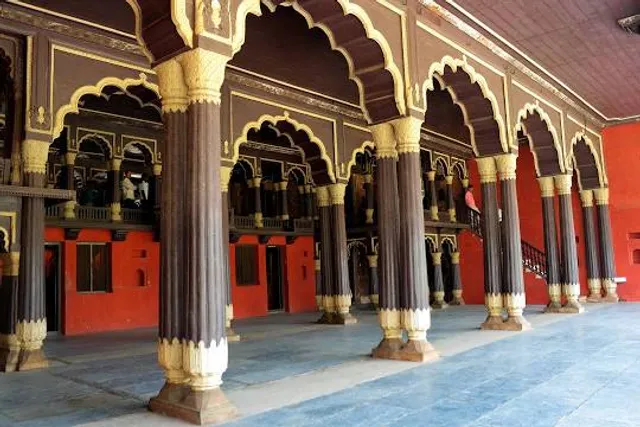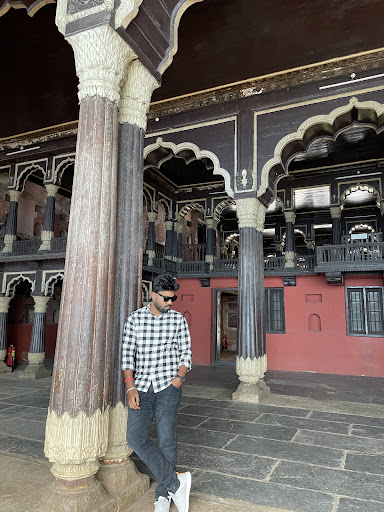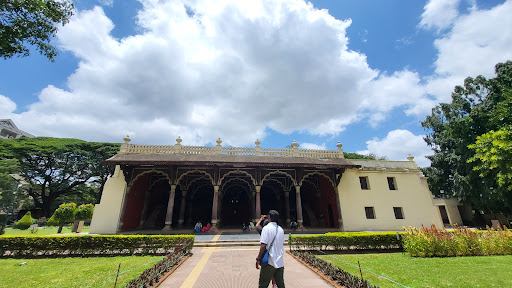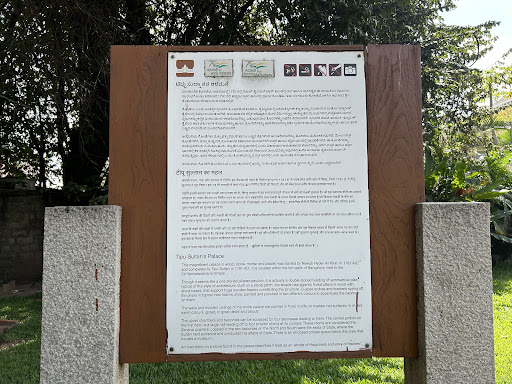Tipu Sultan's Summer Palace things to do, attractions, restaurants, events info and trip planning
Basic Info
Tipu Sultan's Summer Palace
42, Tippu Sultan Palace Rd, Kamalanagar, Chamrajpet, Bengaluru, Karnataka 560018, India
3.9(11.8K)
Open 24 hours
Save
spot
spot
Ratings & Description
Info
Tipu Sultan's Summer Palace, in Bangalore, India, is an example of Indo-Islamic architecture and was the summer residence of the Mysorean ruler Tipu Sultan. Hyder Ali commenced its construction within the walls of the Bangalore Fort, and it was completed during the reign of Tipu Sultan in 1791.
Cultural
Educational
attractions: Kote Shri Prasanna Venkataramana Swami Temple, Bengaluru Fort, J's La Quill Museum, KALPAKA TRAVELS, Shri Gangamma Devi Devasthana, restaurants: Prakash Cafe, Upahara Darshini, Kims Canteen, UDUPI AATITHYA, New Thalassery Restaurant( Kerala food), S.L.V. Coffee Bar, Kalasipalya Chakna Center, Karnataka Bhel House, Kollapuri's Non Veg, Hotel Cornation, N V Naidu Hotel
 Learn more insights from Wanderboat AI.
Learn more insights from Wanderboat AI.Website
karnatakatourism.org
Plan your stay

Pet-friendly Hotels in Bengaluru
Find a cozy hotel nearby and make it a full experience.

Affordable Hotels in Bengaluru
Find a cozy hotel nearby and make it a full experience.
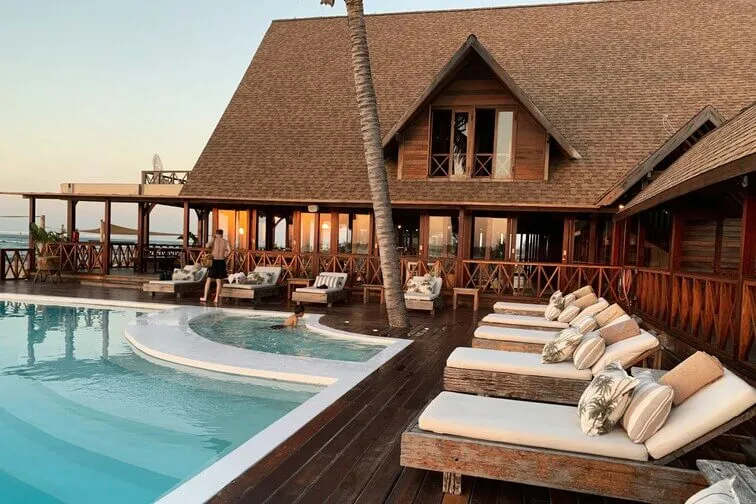
The Coolest Hotels You Haven't Heard Of (Yet)
Find a cozy hotel nearby and make it a full experience.
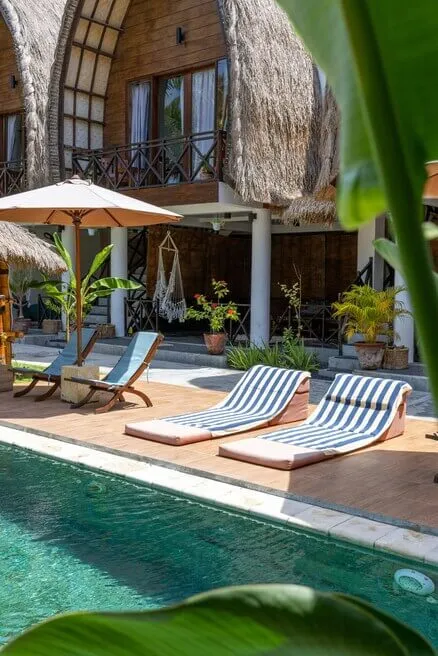
Trending Stays Worth the Hype in Bengaluru
Find a cozy hotel nearby and make it a full experience.
Reviews
Nearby attractions of Tipu Sultan's Summer Palace
Kote Shri Prasanna Venkataramana Swami Temple
Bengaluru Fort
J's La Quill Museum
KALPAKA TRAVELS
Shri Gangamma Devi Devasthana
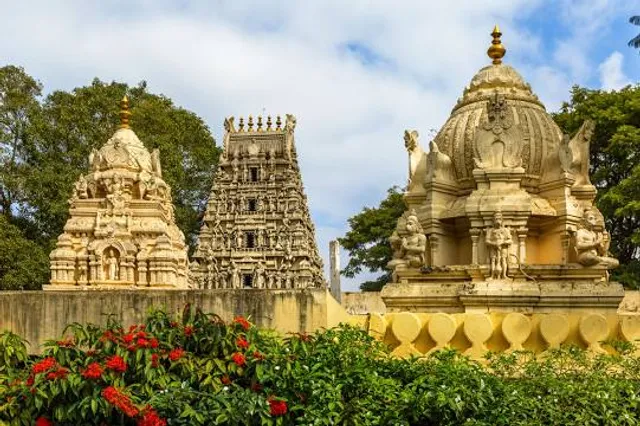
Kote Shri Prasanna Venkataramana Swami Temple
4.7
(633)
Open 24 hours
Click for details
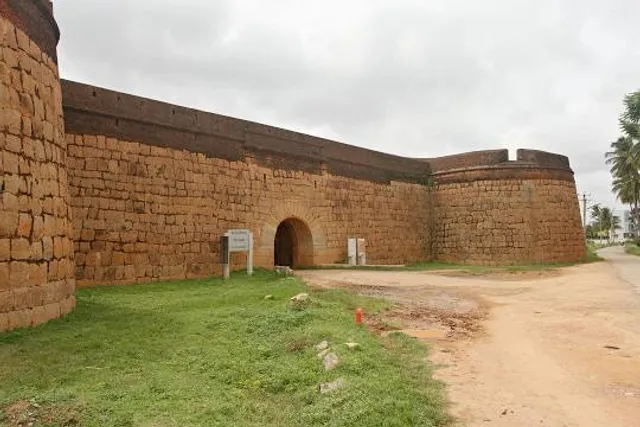
Bengaluru Fort
4.0
(10.1K)
Open 24 hours
Click for details
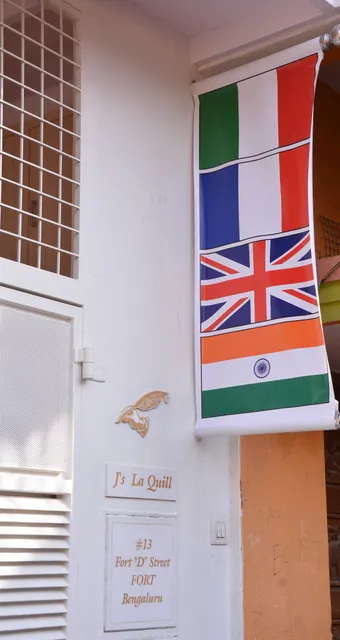
J's La Quill Museum
4.6
(12)
Open 24 hours
Click for details
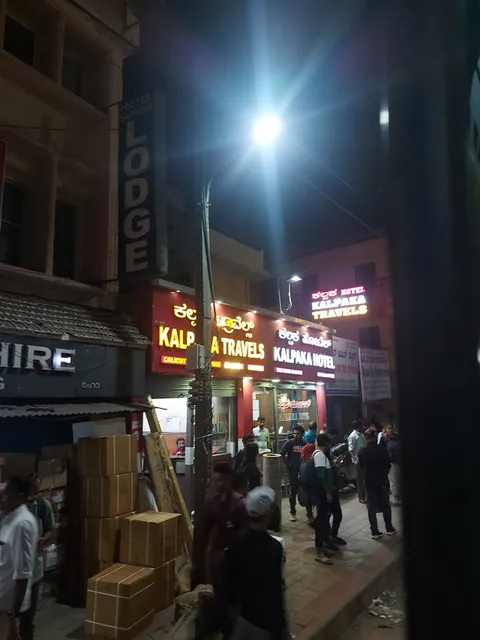
KALPAKA TRAVELS
3.8
(175)
Open 24 hours
Click for details
Things to do nearby
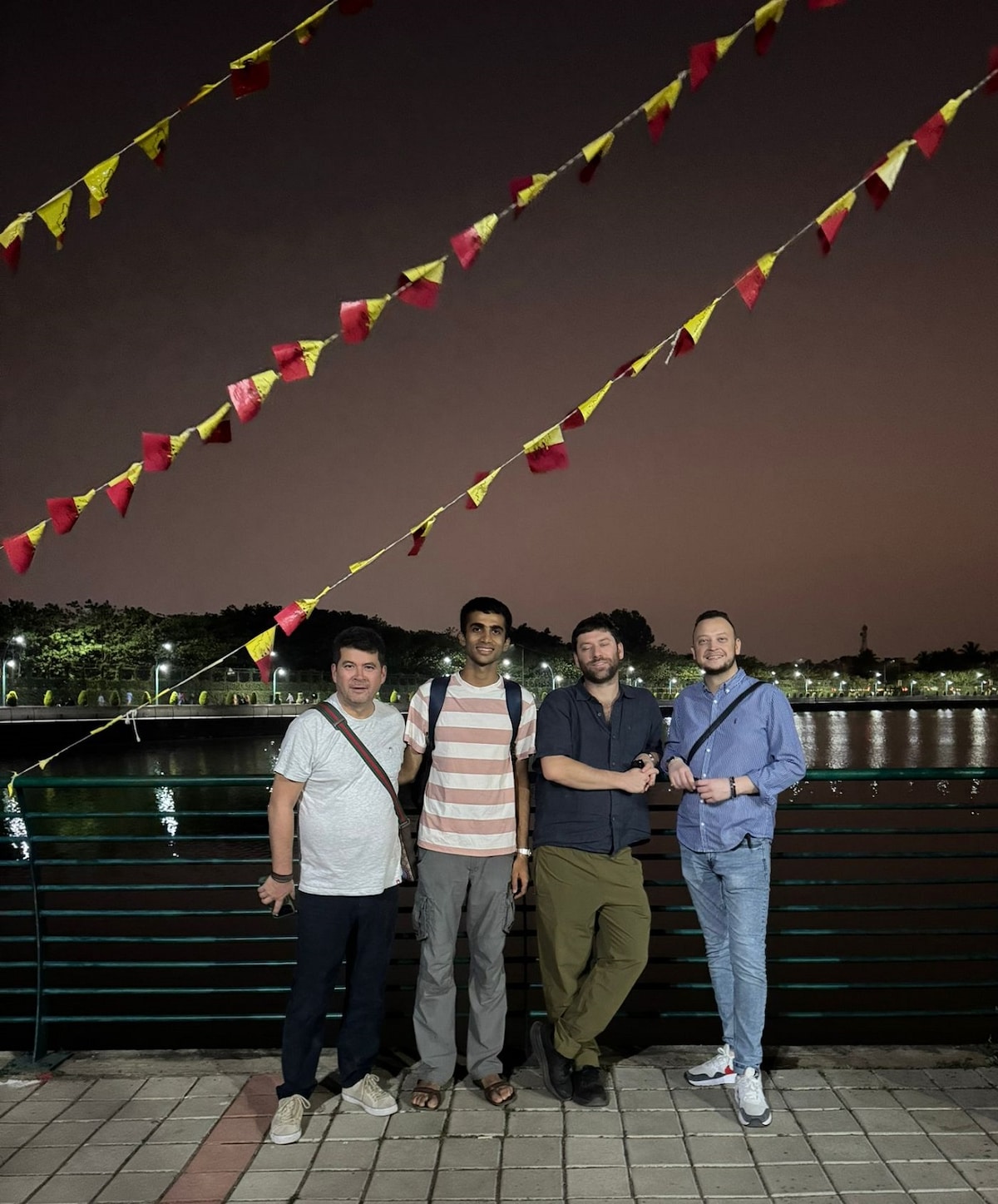
Explore Food in Jayanagar
Thu, Dec 25 • 7:00 PM
Bengaluru, Karnataka, 560011, India
View details
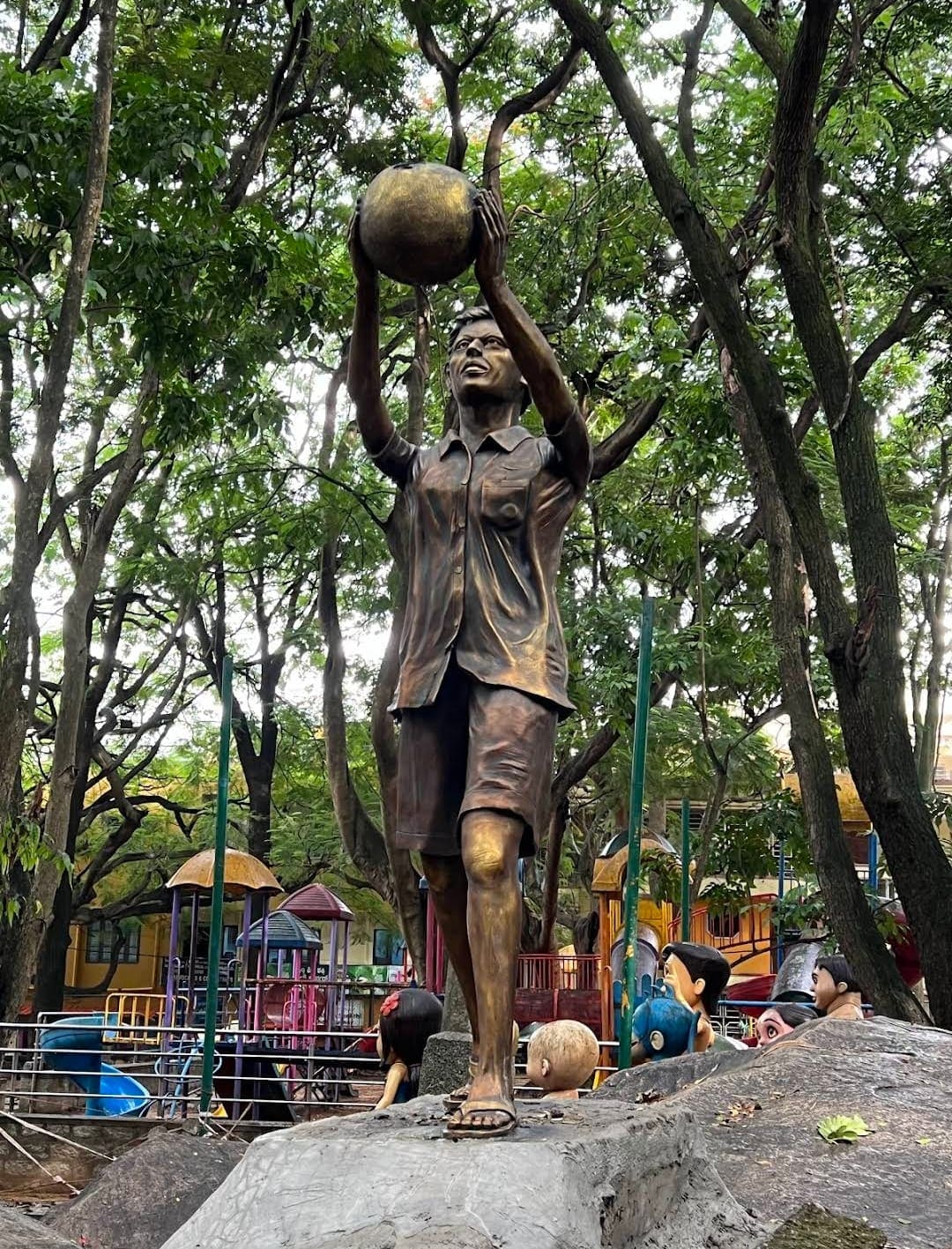
Experience Old Bangalore: Culture & Coffee
Fri, Dec 26 • 8:30 AM
Bengaluru, Karnataka, 560004, India
View details

AI for Product Managers & Bengaluru Community Meetup | HelloPM
Sun, Dec 28 • 8:30 AM
Bengaluru, Karnataka
View details
Nearby restaurants of Tipu Sultan's Summer Palace
Prakash Cafe
Upahara Darshini, Kims Canteen
UDUPI AATITHYA
New Thalassery Restaurant( Kerala food)
S.L.V. Coffee Bar
Kalasipalya Chakna Center
Karnataka Bhel House
Kollapuri's Non Veg
Hotel Cornation
N V Naidu Hotel
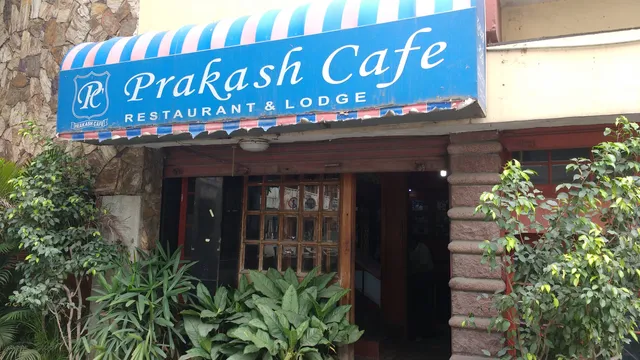
Prakash Cafe
3.9
(1.1K)
$$
Click for details
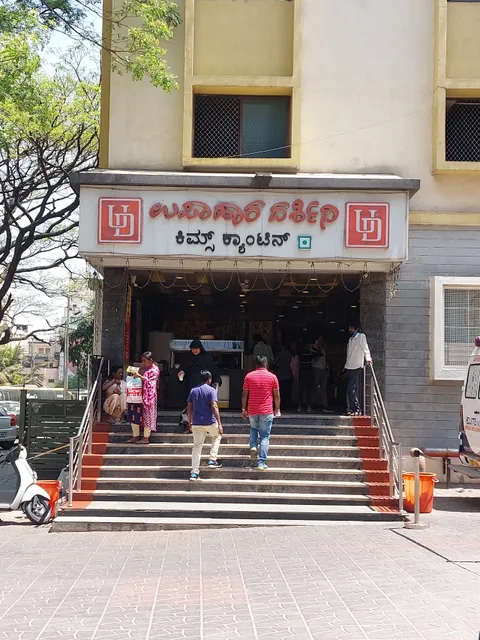
Upahara Darshini, Kims Canteen
4.1
(695)
Click for details
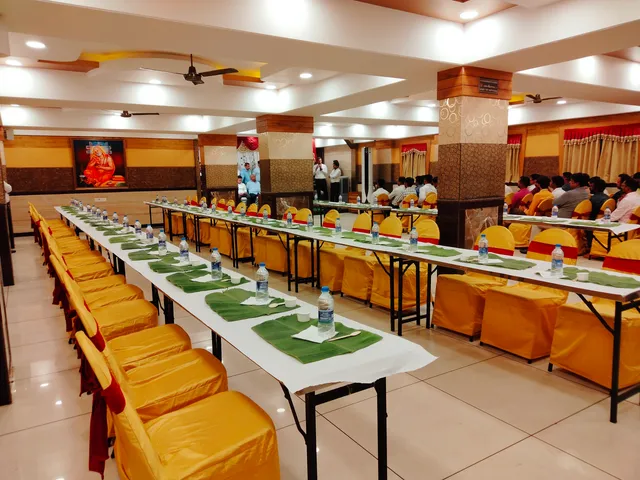
UDUPI AATITHYA
4.2
(2K)
Click for details
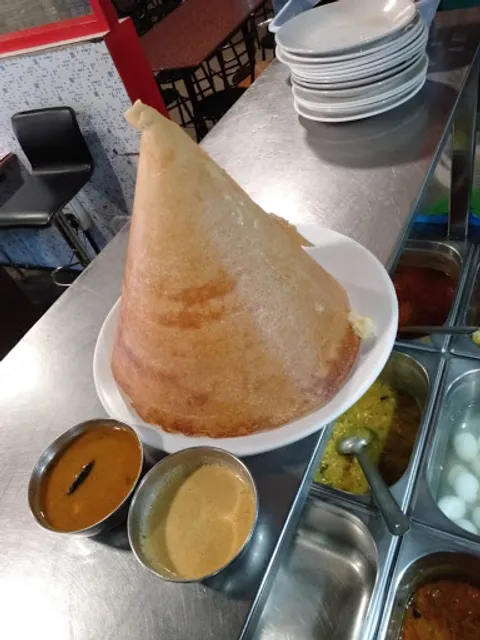
New Thalassery Restaurant( Kerala food)
3.7
(196)
Click for details
